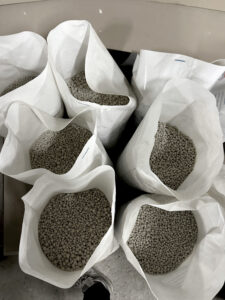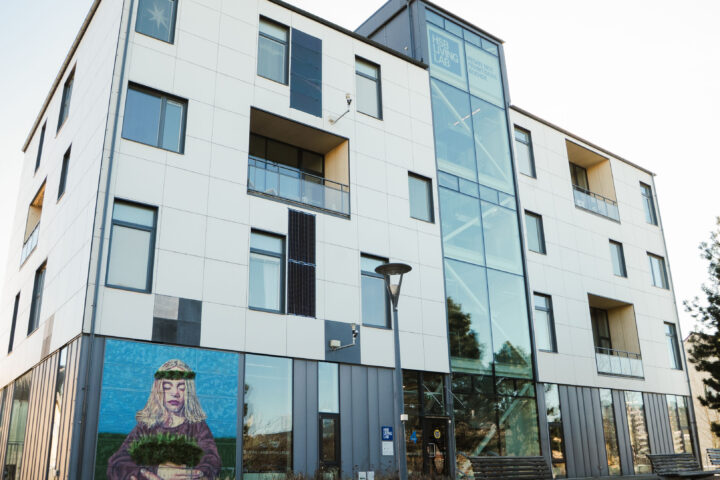CemVision has previously produced its fossil-free cement in its pilot facility with a capacity of hundreds of tonnes per year. Now, the company has transferred the production to a test facility, meaning that the production increases to thousands of tonnes fossil-free cement per year and almost as big reduction in carbon dioxide emissions.
The cement industry stands for about 8 % of the global emissions, a number that needs to decrease rapidly in order to reach the Global Goals and minimise the climate impact. Since 2020, Swedish CemVision has worked towards reducing the impact by developing technologies for fossil-free cement production.
According to CemVision’s method, the solution for fossil-free cement is to let other industries’ residual materials become high-value raw materials, which is resource-efficient and results in less carbon dioxide emissions.
 Manufacturing cement requires high temperatures to process the raw materials. CemVision’s solution enables the use of green electricity instead of the fossil energy sources that the industry uses today. Thanks to raw materials other than limestone, the total energy consumption in CemVision’s production is also significantly lower than in traditional cement production.
Manufacturing cement requires high temperatures to process the raw materials. CemVision’s solution enables the use of green electricity instead of the fossil energy sources that the industry uses today. Thanks to raw materials other than limestone, the total energy consumption in CemVision’s production is also significantly lower than in traditional cement production.
– The cement industry’s climate impact is a huge global problem. In the short term, there is no alternative to replace the world’s need for cement, the main ingredient in concrete and the world’s most used building material. Instead, we have now proven that it is possible to produce cement with new methods and other raw materials, by successfully producing large volumes of cement with minimal emissions, says Oscar Hållén, CEO of CemVision, in a press release.
Test results from large-scale production show both cost and performance benefits. The product’s properties show a high early strength development, which gives the opportunity for faster and new ways of building. It also means that the amount of cement can be reduced in concrete constructions.



